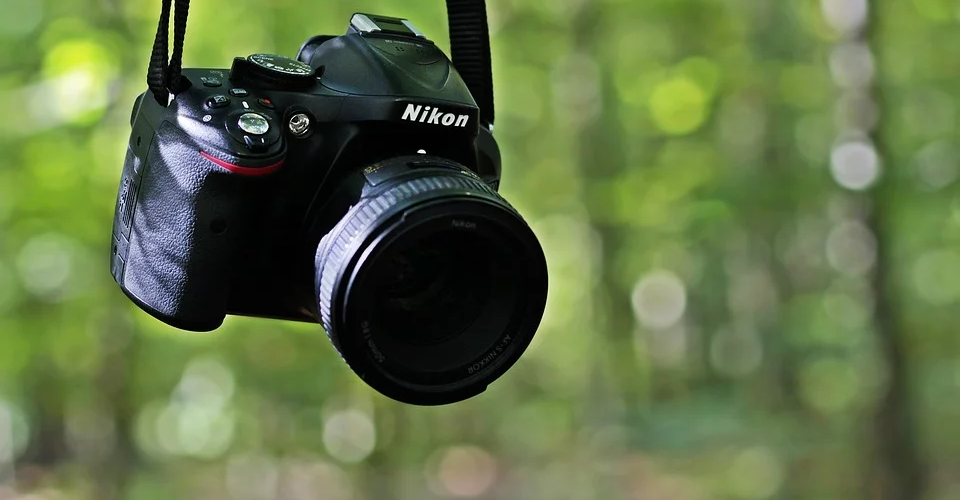6 Best Nikon DX Lenses of 2020
DX is Nikon’s designation for its line of APS-C DSLR cameras. Even though their sensors aren’t as large as ones on full-frame cameras, top DX performers like the D7500 attract pros and enthusiasts alike. You’ll soon find that a kit lens can’t do such capable cameras justice, which is why you’ll want to get an upgrade or two.
There are dozens of Nikon lenses compatible with the DX format, not to mention that aftermarket manufacturers like Sigma and Tamron make worthy glass of their own. We’ve created this useful guide to help you narrow down your choices. It features the best Nikon DX lenses from ultra-wides through standard primes and macro lenses to far-reaching telephotos. Check out what makes these lenses the cream of the crop and make your art more vibrant.
| Budget |
|---|
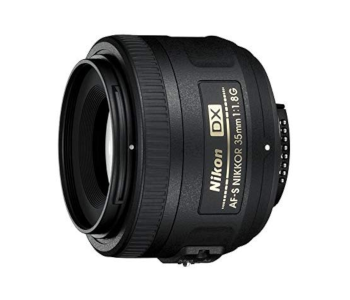 |
| Nikon AF-S DX NIKKOR 35mm f/1.8G |
| 4.2/5.0 |
| Type: Standard prime |
| Image stabilization: No |
| Quiet autofocus and great for low-light work. |
| Check Amazon |
| Best Value |
|---|
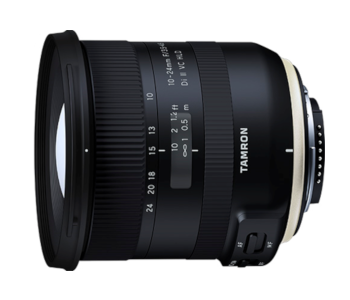 |
| Tamron 10-24mm F/3.5-4.5 Di-II VC HLD |
| 4.5/5.0 |
| Type: Wide-angle zoom |
| Image stabilization: Yes |
| Weather-sealed, light and portable. |
| Check Amazon |
| Top Pick |
|---|
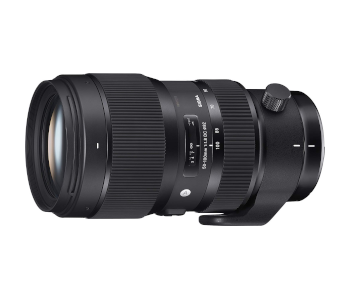 |
| Sigma 50-100mm f/1.8 DC HSM Art Lens |
| 4.8/5.0 |
| Type: Telephoto zoom |
| Image stabilization: No |
| Fantastic sharpness throughout its focal range. |
| Check Amazon |
Nikon DX Lenses Comparison Table
| Image | Product | Overall Rating | Image quality | Build quality | Features | Price |
|---|---|---|---|---|---|---|
 | Sigma 50-100mm f/1.8 DC HSM Art Lens | 4.8 | 4.9 | 4.7 | 4.8 | Check Price |
 | Tamron 10-24mm F/3.5-4.5 Di-II VC HLD | 4.5 | 4.5 | 4.6 | 4.5 | Check Price |
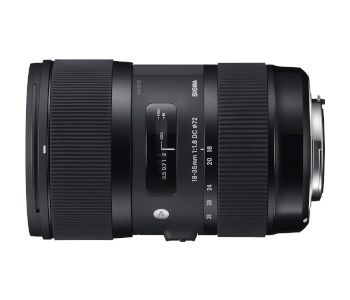 | Sigma 18-35mm f/1.8 DC HSM Art Lens | 4.6 | 4.7 | 4.6 | 4.4 | Check Price |
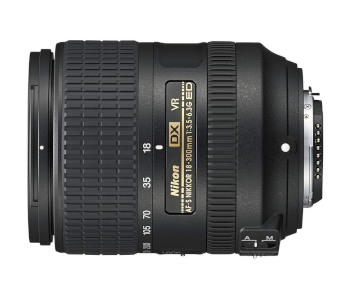 | Nikon AF-S DX NIKKOR 18-300mm f/3.5-6.3G ED VR | 4.4 | 4.2 | 4.5 | 4.5 | Check Price |
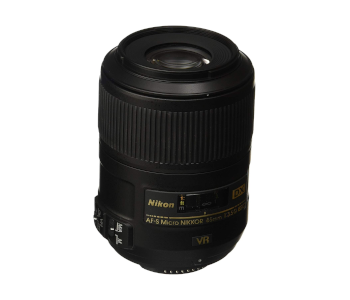 | Nikon AF-S DX Micro NIKKOR 85mm f/3.5G ED VR | 4.3 | 4.3 | 4.2 | 4.3 | Check Price |
 | Nikon AF-S DX NIKKOR 35mm f/1.8G | 4.2 | 4.3 | 4.0 | 4.1 | Check Price |
1. Best Overall – Sigma 50-100mm f/1.8 DC HSM Art Lens
Editor’s Rating: 4.8/5
Are you an architecture, portrait, or sports photographer who needs an incredibly fast and sharp lens? Then look no further than Sigma’s telephoto zoom lens from the Art line. It maintains an impressive aperture of f/1.8 at all zoom levels, is easy to use despite its bulk, and works well on full-frame as well as Nikon DX cameras. Pair this with our other Sigma recommendation, and you’ll be ready for anything.
Overview of Features
There’s no getting around it – the Sigma 50-100mm f/1.8 DC HSM Art Lens is massive. It’s almost seven inches long and weighs more than three pounds. Its appearance on Nikon APS-C cameras is almost comical. However, the tradeoff is worth it as you’re getting a lens with internal zooming, an array of high-quality anti-glare treatments, and superb optical elements that eliminate distortion. Its tripod ring is strategically placed for optimum balance, and you get a petal-shaped hood for even better daytime performance.
This lens excels as a sports shooter thanks to nearly instant autofocusing provided by a HyperSonic motor. It has no trouble keeping moving subjects sharp and maintains speedy performance in all but dimly-lit surroundings. Even then, the lens requires little hunting to keep up. The autofocus isn’t silent, so this lens isn’t the best fit for filmmakers.
The best thing about Sigma’s lens is its constant max aperture. An f-stop value of 1.8 gives you creamy bokeh that clearly separates subjects and their surroundings. It also lets you shoot in low light or crank the shutter speed up to get clean shots of split-second action.
The lens maintains outstanding sharpness throughout its focal range. 50mm is especially impressive as both central and edge clarity is high regardless of aperture. Zooming in will require you to lower aperture to bring vignetting down and sharpness up, but excellent results can be had at values as high as f/4.
What We Didn’t Like
The Sigma 50-100mm f/1.8 DC HSM Art Lens lacks image stabilization. You’ll be using it with a tripod most of the time anyway because of the heft, but the little extra help would go a long way in hectic situations. Using the lens for long stretches is tiring.
| Tech Specs |
|---|
| Dimensions: 3.7 x 3.7 x 6.7 in. |
| Weight: 3.3 lbs. |
| Type: Telephoto zoom |
| Minimum focal length: 50m |
| Maximum focal length: 100mm |
| Maximum aperture: f/1.8 |
| Minimum aperture: f/16 |
| Minimum focus distance: 3.1 ft. |
| Field of view: 31.7° to 16.2° |
| Image stabilization: No |
| The Pros |
|---|
| Fantastic sharpness throughout its focal range |
| Maintains max aperture |
| Outstanding optical properties |
| Speedy autofocus |
| The Cons |
|---|
| Heavy and bulky |
| No image stabilization |
2. Best Value – Tamron 10-24mm F/3.5-4.5 Di-II VC HLD
Editor’s Rating: 4.5/5
Adventurous photographers or those interested in preserving urban moments need wide-angle lenses, and none is more versatile or capable than Tamron’s. The 10-24mm F/3.5-4.5 Di-II VC HLD is brimming with features, some of which you wouldn’t expect on a wide-angle lens. It has superb optics, is built for travel, and won’t set you back much.
Overview of Features
Tamron’s lens is in stark contrast to our overall winner since it is small, light, and designed to be carried effortlessly inside a camera bag or coat pocket. Even so, the build quality is something else. The hard plastic exterior, weather sealing, and fluorine coating come together to create a lens that shrugs off unforgiving weather and rough handling.
It’s rare to see a wide-angle lens with image stabilization, but Tamron’s Vibration Compensation fits nicely into the narrative of a lens you can confidently use after climbing a mountain or for documentary work in dense, dynamic streets. The HLD in its name stands for High Low Drive and determines how the autofocus behaves. Setting it to High gives more torque and a quicker response when shooting stills while Low is slower but also quieter.
The 10-24mm F/3.5-4.5 Di-II VC HLD surprises yet again when it comes to optics. You’d expect a wide-angle lens to struggle with barrel distortion, but here it’s only slightly visible at 10mm on the outer edges. Vignetting isn’t a problem, and neither is color fringing. The lens doesn’t make the best bokeh due to its low max aperture, but that’s insignificant given its purpose.
What’s Bad About It?
Flares are another problem wide-angle lenses struggle with, and Tamron’s is no exception. Flaring is present even with the hood on and best resolved by keeping the sun out of the frame. The AF/MF and HLD commands are easy to toggle accidentally.
| Tech Specs |
|---|
| Dimensions: 3.3 x 3.3 x 3.2 in. |
| Weight: 1.2 lbs. |
| Type: Wide-angle zoom |
| Minimum focal length: 10mm |
| Maximum focal length: 24mm |
| Maximum aperture: f/3.5 to 4.5 |
| Minimum aperture: f/22 to 29 |
| Minimum focus distance: 9.4 in. |
| Field of view: 108° 44′ to 60° 2′ |
| Image stabilization: Yes |
| The Pros |
|---|
| Impressive optical properties, especially the lack of barrel distortion |
| Image stabilization and HLD are welcome additions |
| Weather-sealed |
| Light and portable |
| The Cons |
|---|
| Susceptible to lens flares |
| Physical controls are easy to toggle |
3. Sigma 18-35mm f/1.8 DC HSM Art Lens
Editor’s Rating: 4.6/5
Sigma’s 18-35mm Art Lens is the second part of the company’s dynamic DX duo. It covers the wide and standard angle end of the focal range and is ideally suited for landscapes, events, or portraits. It’s more manageable than the other lens yet maintains a comparable level of excellence. With finely-adjustable autofocus and impressive optics, this lens is the golden standard other wide to standard zoom lenses aspire to reach.
Overview of Features
The Sigma 18-35mm f/1.8 DC HSM Art Lens is built to last. Its body is made from a composite material that maintains dimensions regardless of temperature. That means you could be shooting landscapes in the snow or a wedding at a tropical retreat and experience the same responsiveness. Its mount end is plated in brass and has a rubber seal. The zoom and focus rings are rubberized as well. Their movement is smooth yet provides enough resistance that fine-tuning the desired value is a breeze.
We have to give special props to Sigma for the autofocus. It uses the same HyperSmooth motor as the 50—100mm lens to stick to subjects accurately. Its response time is fast and affected minimally with a drop-off in ambient light. Interrupting the AF with your input feels natural and won’t damage the motor. You can also purchase a USB dock that lets you hook the lens up to a computer and precisely calibrate its focus response.
There isn’t an optical property that the Sigma 18-35mm f/1.8 DC HSM Art Lens doesn’t have firmly under control. You’ll encounter some chromatic aberration in shots with extreme contrasts, but they’re well within your camera’s compensation limits. Barrel distortion is another example – it’s barely noticeable and easy to correct without breaking out Lightroom. Like Sigma’s other lens, this one is sharp from end to end and only suffers minor edge softness at high focal lengths and f-stops. Finally, vignetting is evident at 35mm, but the difference of less than 1.5 EV is excellent for a lens in wide-angle territory.
Are There Drawbacks?
The AF occasionally misses its mark and practically requires you to purchase the dongle for more reliable results. Strangely, this is only an issue for the Nikon version of the lens. 1mm on APS-C cameras corresponds to 24mm on full-frame ones, meaning that the lens has a limited wide-angle range.
| Tech Specs |
|---|
| Dimensions: 3.1 x 3.1 x 4.8 in. |
| Weight: 1.8 lbs. |
| Type: Standard zoom |
| Minimum focal length: 18mm |
| Maximum focal length: 35mm |
| Maximum aperture: f/1.8 |
| Minimum aperture: f/16 |
| Minimum focus distance: 11 in. |
| Field of view: 76.5° to 44.2° |
| Image stabilization: No |
| The Pros |
|---|
| Excellent optical properties |
| Autofocus is responsive and adjustable |
| Body is made from temperature-resistant materials |
| High max aperture for all focal lengths |
| The Cons |
|---|
| Autofocus occasionally overestimates distance |
| Could use a wider minimum focal range |
4. Nikon AF-S DX NIKKOR 18-300mm f/3.5-6.3G ED VR
Editor’s Rating: 4.4/5
Our Nikon DX lens review features a wide repertoire of lenses, but what if you have only enough money to invest in one? In that case, the Nikon AF-S DX NIKKOR 18-300mm f/3.5-6.3G ED VR is the model that will count the most. It has a ridiculous zoom range, is built to last, and has excellent sharpness whether you’re using it as an ultra-wide or telephoto.
Overview of Features
This is Nikon’s second attempt at creating a versatile telephoto lens. The Nikon AF-S DX NIKKOR 18-300mm f/3.5-6.3G ED VR is 30 percent lighter than its predecessor and shorter, too, so making it the mainstay in your camera bag is effortless. The lens isn’t officially weather-sealed, but there is a rubber seal on its mounting end that prevents dust from getting inside. It has a pronounced and grippy zoom ring you can lock to the 18mm position when not in use. Not that you’ll need to since the lens isn’t susceptible to zoom creep.
Physical controls include the 18mm lock, a toggle from automatic to manual focusing, and another that engages Vibration reduction. VR is essential when you’re shooting without a tripod since it visibly reduces camera shake. The autofocus is reasonably quick and doesn’t lose sight of subjects unless they’re moving quickly and unpredictably. It becomes sluggish in low light but works fine in most situations.
We were surprised by how sharp the Nikon AF-S DX NIKKOR 18-300mm f/3.5-6.3G ED VR is. It maintains excellent central image clarity throughout its zoom range while the sweet spot for edge sharpness fluctuates as you’re zooming in. 18mm sees the finest overall results at an aperture of f/5.6 while zooming in to 50mm and beyond is best accompanied by a shift to f/8. Chromatic aberration is present but insignificant enough to be handled by the camera.
Are There Drawbacks?
The Nikon AF-S DX NIKKOR 18-300mm f/3.5-6.3G ED VR suffers from pronounced barrel and pincushion distortions. The former is evident when zoomed out while the latter becomes apparent at 50mm. You can minimize the impact of distortion by picking scenes with few parallel lines, so the lens isn’t suitable for urban and architectural photography. Light fall-off is significant at the highest apertures. Lowering them a step or two will spoil the bokeh, but it also yields better overall brightness.
| Tech Specs |
|---|
| Dimensions: 3.1 x 3.1 x 3.9 in. |
| Weight: 1.2 lbs. |
| Type: Telephoto zoom |
| Minimum focal length: 18mm |
| Maximum focal length: 300mm |
| Maximum aperture: f/3.5 to 6.3 |
| Minimum aperture: f/22 |
| Minimum focus distance: 1.6 ft. |
| Field of view: 76° to 5° 20′ |
| Image stabilization: Yes |
| The Pros |
|---|
| Outstanding versatility and long zoom range |
| Light and small for a telephoto lens |
| Minimal chromatic aberration |
| Great sharpness |
| The Cons |
|---|
| Pronounced barrel and pincushion distortions |
| Strong light fall-off at max apertures |
5. Nikon AF-S DX Micro NIKKOR 85mm f/3.5G ED VR
Editor’s Rating: 4.3/5
You need a macro lens if you aim to bring small subjects we usually don’t notice closer. The Nikon AF-S DX Micro NIKKOR 85mm f/3.5G ED VR is a great tool for the task as shoots at a 1:1 scale, creating detailed images of flowers, postage stamps, and so on. It can also serve as a portrait lens as its beautiful bokeh creates an appealing contrast between the subject and its environment.
Overview of Features
Nikon’s macro lens is among the lightest models for the DX format. Its polycarbonate body isn’t officially weather-sealed, but the rubberized gasket at its mount end protects the lens from dust and moisture. The focus ring is wide and easy to rotate. A small screen that displays the magnification and distance scale is also present.
The macro lens features one of the most silent autofocus motors on review. It comes recommended for use in documentary filmmaking. Its Silent Wave Motor has little trouble bringing subjects into focus regardless of size. Image stabilization is a must for macro lenses since using a tripod for macro work isn’t always an option. Luckily, Vibration Reduction does a good job.
Bokeh quality should be the strong suit of any macro lens, but we were impressed with it nevertheless. The nine-bladed aperture produces smooth light circles at f/3.5, but you can even use f/11 and still get a blurred background that draws one’s attention to the subject.
Central sharpness is good at all but the smallest apertures because of diffraction. You’ll get the best results if you stick to f/5.6 and f/8, but opening the aperture up all the way won’t lead to drastic detail loss on the edges either. There’s a bit of barrel distortion, and vignetting is within acceptable levels.
What’s Bad About It?
The Nikon AF-S DX Micro NIKKOR 85mm f/3.5G ED VR has trouble with chromatic aberration. Crisscrossing branches or the edges of brightly-lit flowers exhibit unwanted colors along the edges. Correcting this will require post-production. The lens doesn’t have a focus limiter. Most macro lenses do as this speeds up focusing times. Expect hunting and slow AF speeds.
| Tech Specs |
|---|
| Dimensions: 2.9 x 2.9 x 3.9 in. |
| Weight: 12.5 oz. |
| Type: Macro |
| Focal length: 85mm |
| Maximum aperture: f/3.5 |
| Minimum aperture: f/35 |
| Minimum focus distance: 11.3 in. |
| Field of view: 18° 50′ |
| Image stabilization: Yes |
| The Pros |
|---|
| Lightweight and durable |
| Beautiful bokeh across a wide range of aperture sizes |
| 1:1 zoom |
| Works well for portrait photography |
| The Cons |
|---|
| No focus limiter |
| Pronounced chromatic aberration |
6. Best Budget Option – Nikon AF-S DX NIKKOR 35mm f/1.8G
Editor’s Rating: 4.2/5
Manufacturers have long since abandoned including 50mm equivalent primes with their cameras as kit lenses. Even though the standard zooms you get nowadays are useful, a prime like the Nikon AF-S DX NIKKOR 35mm f/1.8G is hard to beat. It’s fast and bright, focuses quickly without making a sound, and is very affordable as well.
Overview of Features
This is the smallest and lightest lens on review. Given its price and performance, it should be part of any DX owner’s travel kit. The lens isn’t as well made as more expensive options, but its hard plastic body and metal mount are a sign that Nikon maintains quality standards even at such a low price point. The focus ring is thin but has a grippy texture. It focuses independently of the camera, meaning you can adjust it while the camera is off.
The lens doesn’t have image stabilization, but that’s not unusual considering its focal length and the fact that Nikon primes don’t come with IS in general. On the other hand, its autofocus is powered by a Silent Wave Motor. True to its name, the AF will easily be drowned out by nature or traffic and works well for photos and videos alike
The greatest step-up kit lens users will notice is the high maximum f value. Opening the lens up to f81.8 lets you make classy portraits with the subject defined against a blurred background clearly. Light falloff is controlled decently, with software or in-camera intervention necessary only at f/1.8 and f/2. Barrel and pincushion distortion are nonexistent. Sharpness is satisfactory as well and preserved best between f/4 and f/8.
Are There Drawbacks?
The Nikon AF-S DX NIKKOR 35mm f/1.8G is another lens with color fringing problems. Both longitudinal and lateral chromatic aberration are a concern, but keeping sharp contrast to a minimum helps to minimize the effects they have on picture quality. The lens requires that you play by ear when using it as there are no depth of field or distance markings near the focus ring.
| Tech Specs |
|---|
| Dimensions: 2.8 x 2.8 x 2.1 in. |
| Weight: 7.1 oz. |
| Type: Standard prime |
| Focal length: 35mm |
| Maximum aperture: f/1.8 |
| Minimum aperture: f/22 |
| Minimum focus distance: 11.8 in. |
| Field of view: 44° |
| Image stabilization: No |
| The Pros |
|---|
| Excellent value for the money |
| Sharp and optically sound |
| Quiet autofocus |
| Great for low-light work |
| The Cons |
|---|
| Lacks DOF and distance markings |
| Pronounced chromatic aberration in challenging conditions |
Contents
- Nikon DX Lenses Comparison Table
- 1. Best Overall – Sigma 50-100mm f/1.8 DC HSM Art Lens
- Overview of Features
- What We Didn’t Like
- 2. Best Value – Tamron 10-24mm F/3.5-4.5 Di-II VC HLD
- Overview of Features
- What’s Bad About It?
- 3. Sigma 18-35mm f/1.8 DC HSM Art Lens
- Overview of Features
- Are There Drawbacks?
- 4. Nikon AF-S DX NIKKOR 18-300mm f/3.5-6.3G ED VR
- Overview of Features
- Are There Drawbacks?
- 5. Nikon AF-S DX Micro NIKKOR 85mm f/3.5G ED VR
- Overview of Features
- What’s Bad About It?
- 6. Best Budget Option – Nikon AF-S DX NIKKOR 35mm f/1.8G
- Overview of Features
- Are There Drawbacks?

